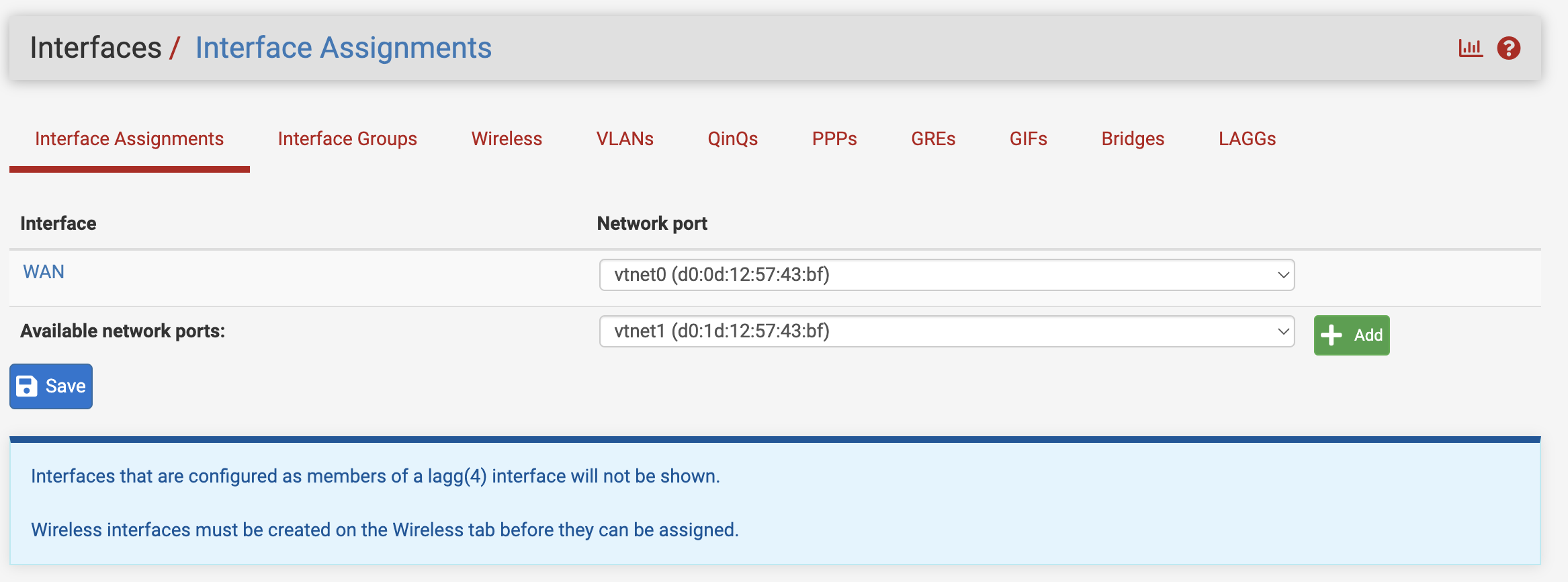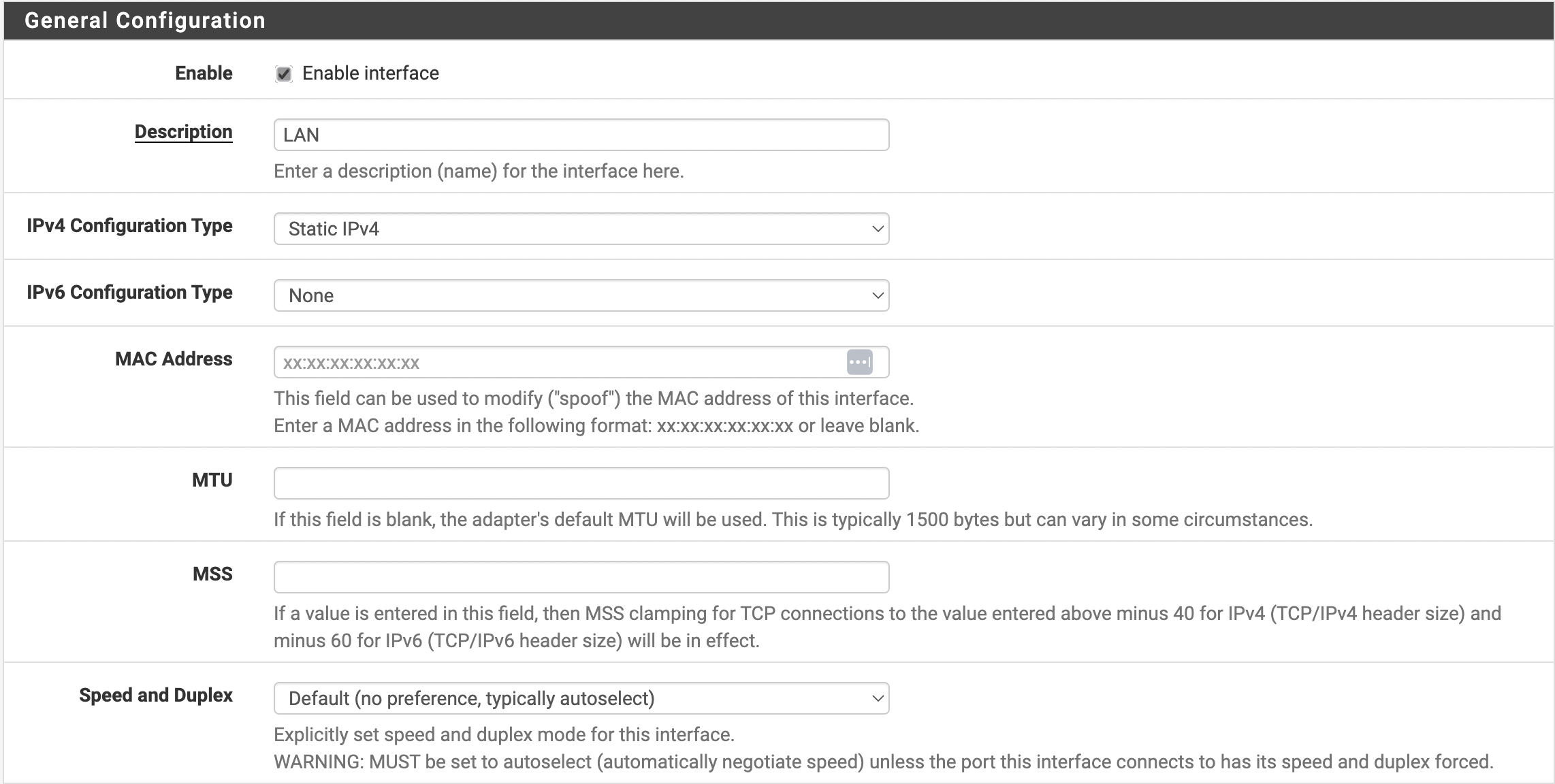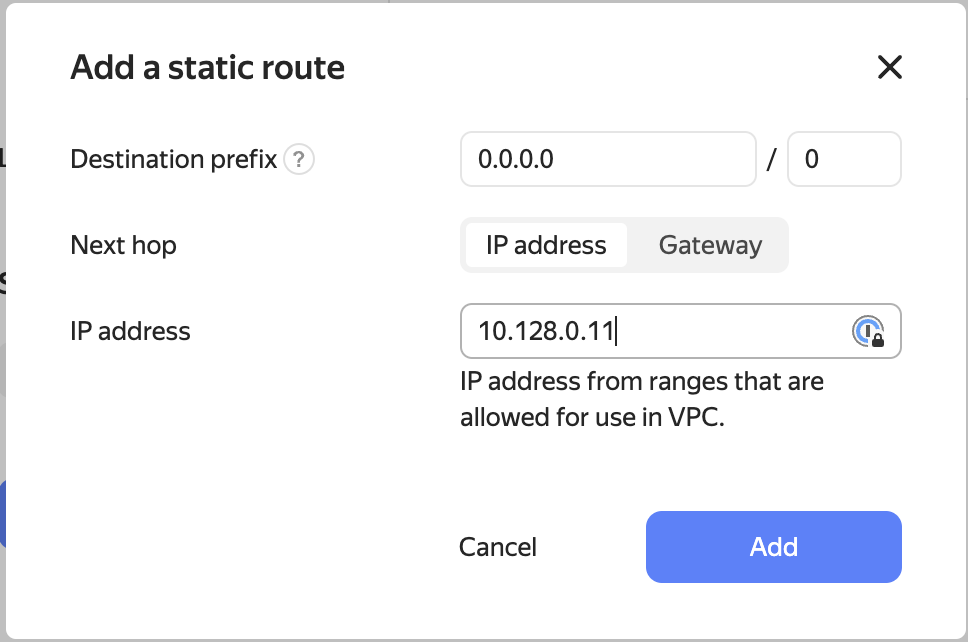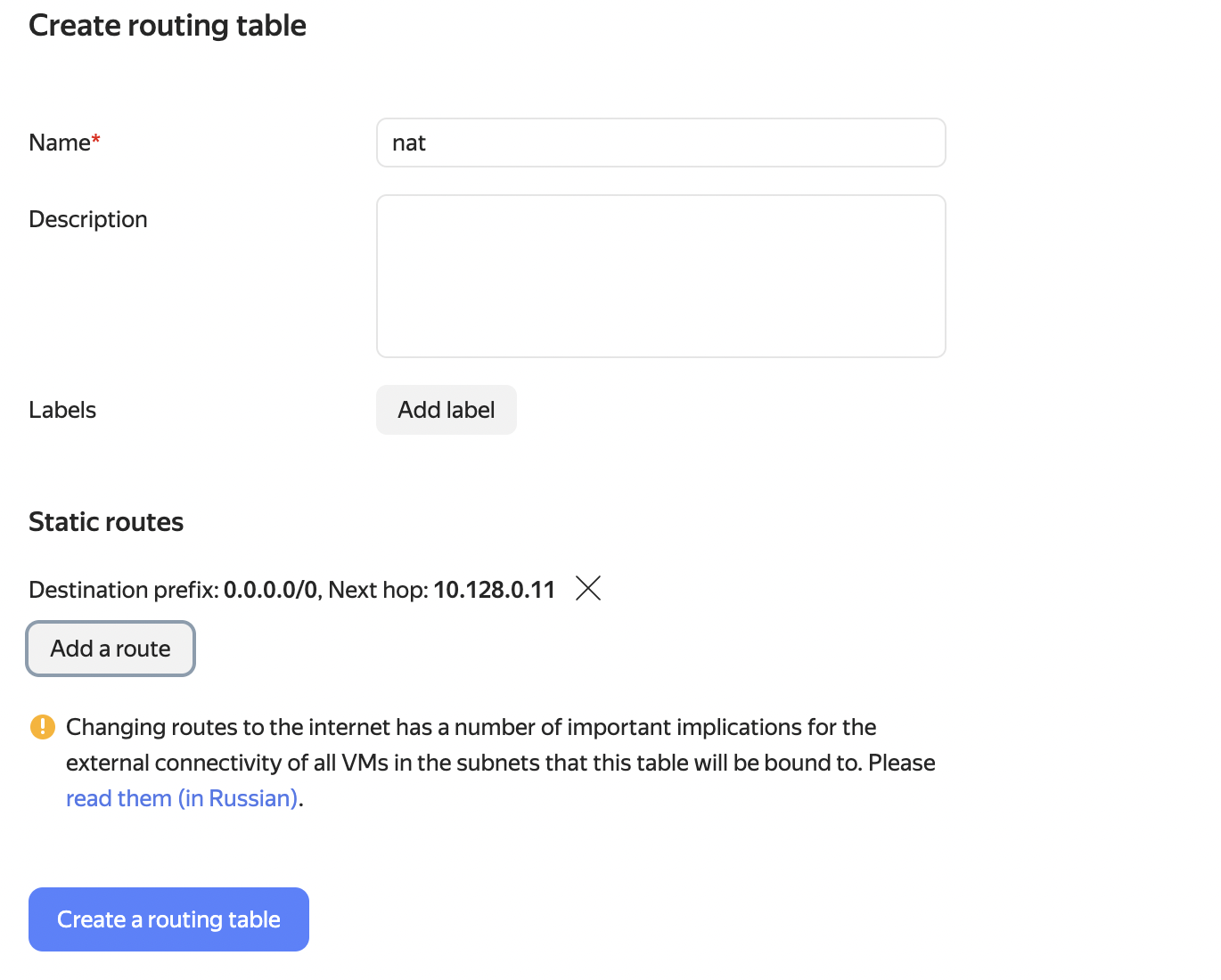pfSense as NAT instance
After creating a virtual machine in Yandex cloud, you will be able to use SSH to connect and get the password to access the web interface of pfSense firewall.
Connecting via ssh
ssh freebsd@public_vm_public_ipPress 8 to access the console
The file with the new password is available at
/conf/root_password With this password, you can log in to the web interface at https://публичный-ip-vm
Username: admin
Password: from file
After successful authorization you can proceed to basic configuration, to do this go to Interfaces –> Assignments and click Add

After adding, proceed to static IP address settings, check the “Enable” box.
For IPv4 Configuration Type, select Static IPv4.

Write the IP address and select and choose the subnet mask

Click save and then Apply changes
Then configure static routing for virtual machines on your private network
In my case, my private network is 10.128.0.0.0/24 and the pfSense LAN interface has an address of 10.128.0.11, then static routing would look like this

Add and save
